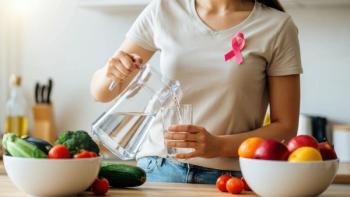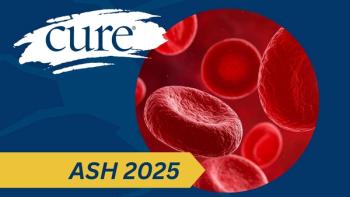
October Treatment Advances and Survivorship Perspectives in GU Cancers
Key Takeaways
- Minimally invasive kidney cancer surgeries, using robotic and laparoscopic techniques, improve patient recovery and quality of life by enabling partial nephrectomies.
- A new drug combination for advanced renal cell carcinoma shows significant improvement in progression-free survival and response rates, with ongoing regulatory review in China.
Throughout October, CURE highlighted research developments and evolving treatment strategies that continue to shape genitourinary cancer care.
Throughout October, CURE highlighted research developments and evolving treatment strategies that continue to shape cancer care. From minimally invasive surgical advances to emerging drug combinations, this month’s coverage underscored the importance of innovation and shared knowledge.
The following stories reflect meaningful progress and the voices of individuals directly impacted.
Minimally Invasive Kidney Cancer Surgery Improves Patient Recovery
In an
He explained that laparoscopic and robotic “keyhole” surgeries enable tumor removal through small incisions using specialized instruments and a telescopic camera. The use of three-dimensional anatomical models generated from patients’ computed tomography (CT) or magnetic resonance imaging (MRI) scans has further enhanced surgical planning. These models allow surgeons to better understand tumor depth and surrounding anatomy before and during the procedure.
“Minimally invasive surgery … allowed us to offer the majority of our patients a partial nephrectomy. Partial nephrectomy means removing just the part of the kidney and preserving the rest of the kidney so that patients can have a better quality of life and minimize their risk of needing dialysis in the future,” Munver stated to CURE.
New Drug Combination Demonstrated Improved Outcomes in Advanced Renal Cell Carcinoma (RCC)
Results from the phase 3 FRUSICA-2 study suggested that combining Fruzaqla (fruquintinib) with Tyvyt (sintilimab) may provide a promising new treatment option for patients with advanced renal cell carcinoma (RCC) whose disease progressed after first-line therapy.
In this randomized, open-label trial, 234 patients received either the Fruzaqla and Tyvyt combination or monotherapy with Inlyta (axitinib) or Afinitor (everolimus). Median progression-free survival (PFS) was 22.2 months with the combination versus 6.9 months with monotherapies. The objective response rate also favored the combination at 60.5% compared with 24.3%.
Investigators reported that the safety profile aligned with what is expected from each individual agent. Although grade 3 (severe) or higher side effects were more common in the combination group, the marked improvement in disease control and duration of response indicated meaningful clinical benefit. Regulatory review for the combination therapy is now underway in China.
Five-Time Cancer Survivor Shares Hope After Bladder Cancer Diagnosis
Fran Curtis, a five-time cancer survivor, spoke with CURE regarding her experience navigating a bladder cancer diagnosis in 2016. Although she previously survived breast, appendix and skin cancers, she described bladder cancer as the most emotionally challenging due to concerns regarding possible removal of the bladder and fear of recurrence.
Curtis emphasized that her earliest symptoms were subtle urinary changes rather than visible blood in the urine. She encouraged women to seek timely evaluation for any persistent urinary symptoms, noting that early detection can significantly expand treatment options.
“I'm [now] cancer-free, and I've had several checkups. Even though the treatments are frightening, if it doesn't work, there's other options as well. There's always hope,” she emphasized to CURE.
Curtis went on to credit strong support from family and her care team for sustaining her through treatment. Her message to others: persistence and hope remain essential, as new therapies continue to emerge.
Clinical Trial Participant Highlights Importance of Education in Bladder Cancer Care
Bill Parisi participated in the
“If it helps somebody or it’s teaching these people, then that’s what it’s all about,” he emphasized in the interview.
Parisi encouraged patients to ask questions, seek second opinions and consider clinical trials as part of their care discussions. He also highlighted the essential role of compassionate, accessible medical teams in helping patients feel supported and informed.
Understanding a Stage 2 Prostate Cancer Diagnosis
CURE explains the meaning of a stage 2 prostate adenocarcinoma diagnosis, including how tumor size, prostate-specific antigen (PSA) levels and Gleason-based grade group influence both staging and treatment planning.
Because stage 2 prostate cancer remains localized to the prostate, the prognosis is generally excellent. Treatment options may include radical prostatectomy, external beam radiation therapy (EBRT), brachytherapy, or active surveillance depending on age, overall health, and disease characteristics. Clear communication with an oncology team remains central to making a treatment choice aligned with personal priorities.
References
- “Minimally Invasive Kidney Cancer Treatments Boosts Patient Recovery,” by Dr. Ravi Munver. CURE; Oct. 9, 2025. https://www.curetoday.com/view/minimally-invasive-kidney-cancer-treatments-boosts-patient-recovery
- “Fruzaqla and Tyvyt Combo Shows Improved Outcomes in Advanced Kidney Cancer,” by Ryan Scott. CURE; Oct. 14, 2025. https://www.curetoday.com/view/fruzaqla-and-tyvyt-combo-shows-improved-outcomes-in-advanced-kidney-cancer
- “Five-Time Survivor Reflects on Bladder Cancer: ‘There’s Always Hope’,” by Alex Biese. CURE; Oct. 22, 2025. https://www.curetoday.com/view/five-time-survivor-reflects-on-bladder-cancer-there-s-always-hope-
- “SUNRiSE-1 Participant Shares Insights on Bladder Cancer Education,” by Ryan Scott. CURE; Nov. 1, 2025. https://www.curetoday.com/view/sunrise-1-participant-shares-insights-on-bladder-cancer-education
- “FDA Approves Inlexzo for Some With Non–Muscle Invasive Bladder Cancer,” by Alex Biese. CURE; Sept. 9, 2025. https://www.curetoday.com/view/fda-approves-inlexzo-for-some-with-non-muscle-invasive-bladder-cancer
- “What Does a Stage 2 Prostate Cancer Diagnosis Mean for Me?,” by Gina Mauro. CURE. https://www.curetoday.com/view/what-does-a-stage-2-prostate-cancer-diagnosis-mean-for-me-




